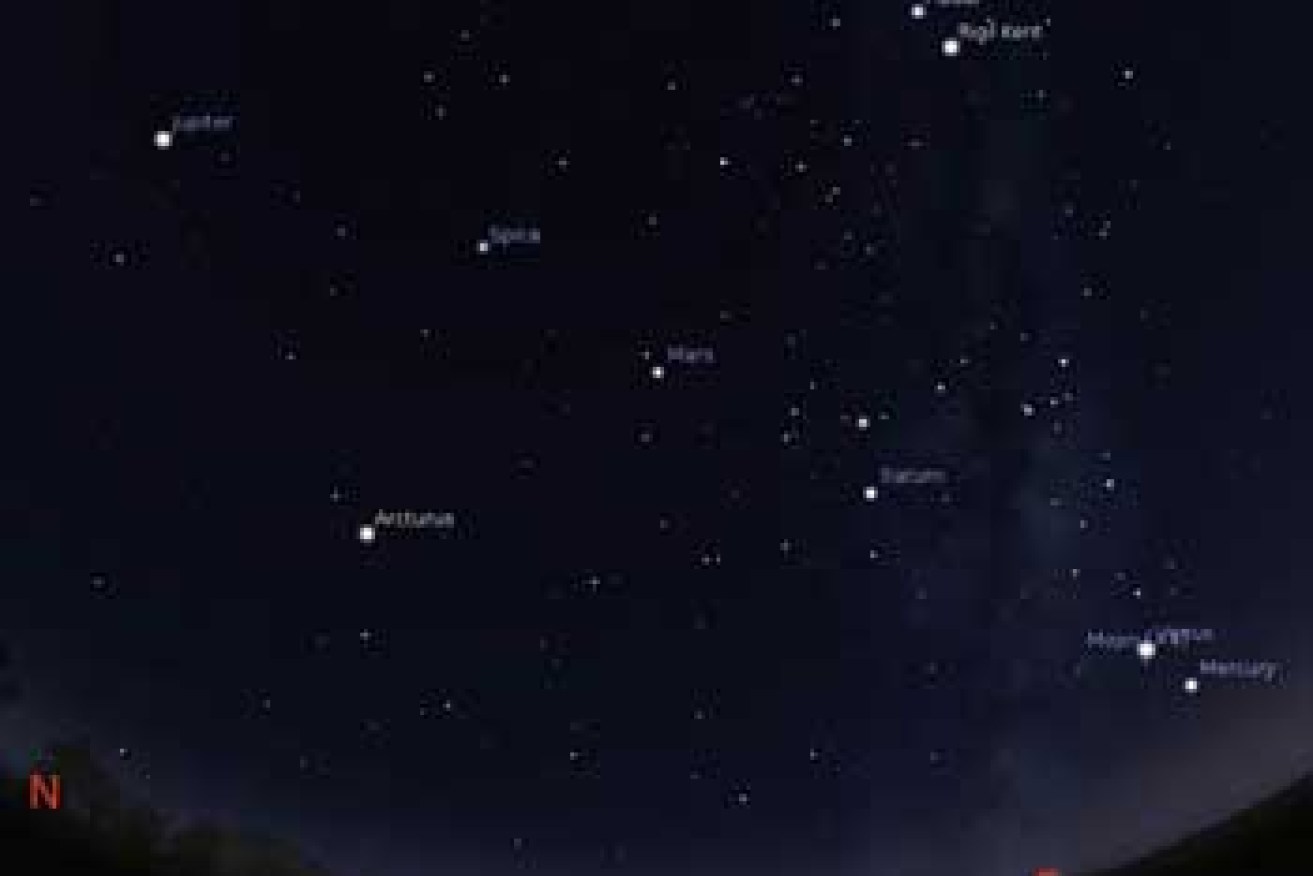Planets, stars put on stellar show from outer space


ABC
The universe is offering a rare series of treats to astronomers over the next seven days, with the brightest stars visible in the night sky during February likely to be planets.
Astronomy buffs can find the Pleiades, zodiac constellations and a fading planetary alignment among the impressive sights currently gracing the night sky. But where should you look? Find out below.
• Astronaut tweets photos of flower grown in space
• Space rocket launch fails for third time
• Phone calls from space and Putin’s book of quotes
Planetary alignment
Since late January, five of the brightest planets in the night sky – Mercury, Venus, Mars, Jupiter and Saturn – have been visible to the naked eye.
Continuing until February 20, they can be seen by looking from the point where the sun would rise along a line to the moon.

Planetary alignments are extremely rare, hence the saying: “If the planets align”. Photo: Getty
“The best skies are in the early morning, you can see the five major planets maybe an hour and a half before sunrise,” Australasian Science Magazine‘s Dave Reneke told The New Daily.
“This is an unusual alignment because we haven’t seen them in about 10 years like this.
“They are not hard to pick out.”
Mars was distinctive due to its red colour, as were the bright planets, Venus and Jupiter. A clear view of the horizon would reveal the planet that appeared the lowest, Mercury.
“The key to any peering at the sky through a telescope – the best thing anyone can do – is get to the darkest skies you can,” Mr Reneke said.
“So if you are in the city get away from the lights … that is hard to do in the early morning I know.”
But if you still weren’t able to find the planets, smartphone applications like SkyView or Star Chart could help to point you in the right direction.
Pleiades
The Pleiades, or Seven Sisters, are a group of six stars located in the constellation of Taurus.
It can be seen with the naked eye, but was at its best when seen through a telescope.
“It is a beautiful group of hundreds of stars that are fairly close to us and the main stars that make up the constellation, make up the insignia of Subaru,” Mr Reneke said.
“Find the Orion and over to the left there are a small group of stars in a cluster.”
The Southern Pleiades, which is only visible in the southern hemisphere, is much more difficult to see unaided, but a telescope or binoculars can help.

The Pleiades were the inspiration for the Subaru logo. Photo: Getty
It can be found by looking up from the brightest star in the Southern Cross. The second bright star you come to is surrounded by a halo of dim stars.
Both are visible from about an hour after sunset. The Pleiades will progress across to the west of the night sky, while the Southern Pleiades will move further above the horizon throughout February, but become tough to see as the moon brightens.
Orion, Taurus the Bull, Sirius
Perhaps better known as the saucepan, the Orion constellation was easiest to see just after dark.
“Anyone who has got a small telescope, or even a pair of binoculars, if they look at the handle of the saucepan, in the middle of the handle there are three stars there, the middle star is not a star but a nebula, a cloud of gas where stars are being born,” Mr Reneke said.
“It is a real astronomical favourite.”
It can be seen without assistance, but the best view – and chance of distinguishing the nebula – was with a telescope or binoculars.
To the right of Orion, you will find Taurus the Bull, visible in the southern hemisphere between late spring and during summer, albeit upside-down.
“To the right of Orion, you can’t miss it, almost overhead is the brilliant star Sirius, absolutely brilliant, bright white-blue star, it is the brightest star in the sky,” Mr Reneke said.









